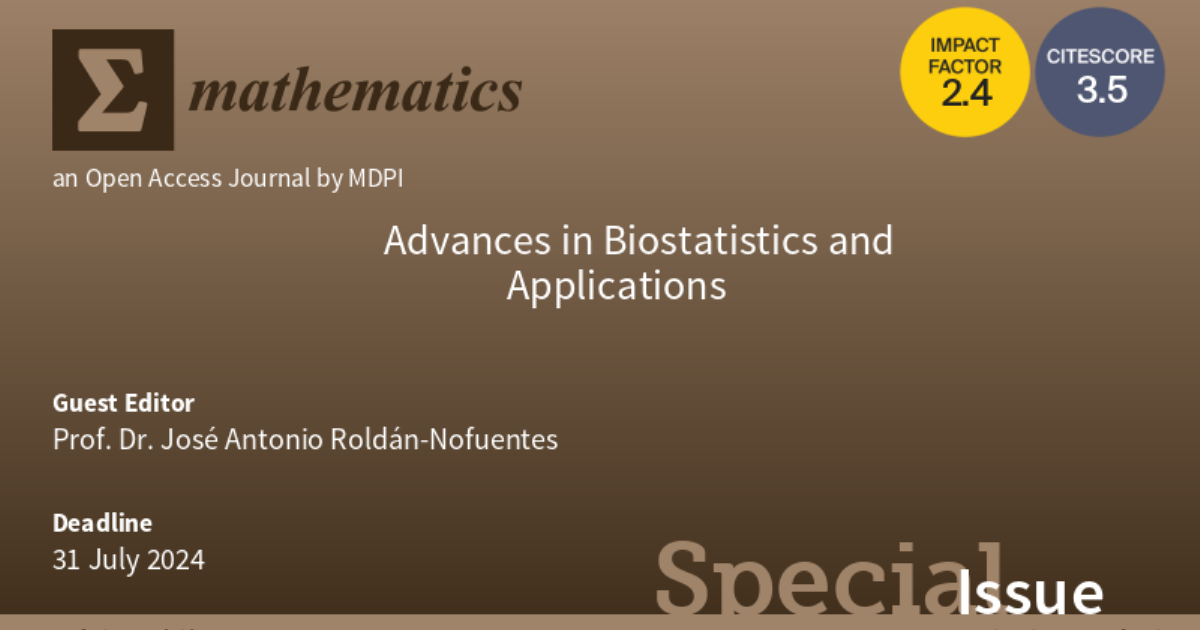Advances in Biostatistics and Applications
A special issue of Mathematics (ISSN 2227-7390). This special issue belongs to the section "Probability and Statistics".
Deadline for manuscript submissions: 31 July 2024 | Viewed by 4976

Special Issue Editor
Interests: biostatistics; categorical data analysis; computational statistics; missing data in medical research; statistics in diagnostic medicine
Special Issues, Collections and Topics in MDPI journals
Special Issue Information
Dear Colleagues,
The resolution of problems typical of medicine, pharmacology, biology, and health sciences in general has experienced significant progress for several decades. Biostatistics use statistical methods to solve problems typical of these areas of knowledge. The purpose of this Special Issue is to provide a collection of high-quality manuscripts on all aspects of theoretical research and novel applications of biostatistics. Simple applications to medical data are not the subject of this Special Issue.
Topics of interest include, but are not limited to, the following: Bayesian methods in biostatistics, clinical trials, diagnostic studies, epidemiology and general biostatistics, lifetime data analysis, and novel applications in health sciences.
Prof. Dr. José Antonio Roldán-Nofuentes
Guest Editor
Manuscript Submission Information
Manuscripts should be submitted online at www.mdpi.com by registering and logging in to this website. Once you are registered, click here to go to the submission form. Manuscripts can be submitted until the deadline. All submissions that pass pre-check are peer-reviewed. Accepted papers will be published continuously in the journal (as soon as accepted) and will be listed together on the special issue website. Research articles, review articles as well as short communications are invited. For planned papers, a title and short abstract (about 100 words) can be sent to the Editorial Office for announcement on this website.
Submitted manuscripts should not have been published previously, nor be under consideration for publication elsewhere (except conference proceedings papers). All manuscripts are thoroughly refereed through a single-blind peer-review process. A guide for authors and other relevant information for submission of manuscripts is available on the Instructions for Authors page. Mathematics is an international peer-reviewed open access semimonthly journal published by MDPI.
Please visit the Instructions for Authors page before submitting a manuscript. The Article Processing Charge (APC) for publication in this open access journal is 2600 CHF (Swiss Francs). Submitted papers should be well formatted and use good English. Authors may use MDPI's English editing service prior to publication or during author revisions.
Keywords
- Bayesian biostatistics
- biomarkers
- categorical data analysis in health studies
- clinical trials
- diagnostic tests and roc curves
- disease modelling
- epidemiology
- general biostatistics
- lifetime data analysis in health studies
- medical statistics
- meta-analysis
- pharmaceutical statistics
- sampling methods in health studies
- survival analysis





